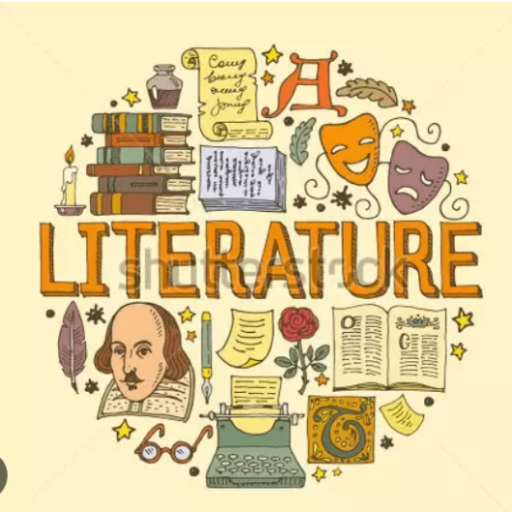John Keats, an influential figure in English literature, is widely regarded as one of the most prominent Romantic poets. His poetic genius and profound insights into the human experience have captivated readers for centuries. In this article, we will learn what makes John Keats a Romantic Poet? and explore the unique qualities that make John Keats a true representative of the Romantic Movement.
What Makes John Keats a Romantic Poet?
What is Romanticism?
Before delving into what makes John Keats a Romantic poet, let’s briefly touch upon the essence of Romanticism itself.
Advertisement
Romanticism was a literary and artistic movement that emerged in the late 18th century as a reaction against the Enlightenment’s emphasis on reason and rationality.
Advertisement
It celebrated individualism, imagination, and emotional intensity, seeking to evoke powerful emotions and portray the beauty of nature.
Advertisement
The Sensuous Language of Keats
Keats’s poetry is characterized by its rich and sensuous language. He skillfully weaves together vivid imagery, vibrant colors, and evocative descriptions, creating a multisensory experience for the reader. In his famous ode “Ode to a Nightingale,” he writes:
Advertisement
"Thou wast not born for death, immortal Bird! No hungry generations trample thee down."
By employing such vivid language, Keats transports his readers into a realm of heightened sensation, enabling them to fully immerse themselves in the beauty of his poetic world.
The Themes of Love and Beauty
Love and beauty are recurrent themes in Keats’s poetry. His exploration of these themes reflects the Romantic belief in the power of emotions and the pursuit of intense experiences. Keats often depicts love as both a source of joy and pain, delving into the complexities of human relationships. In his sonnet “Bright Star,” he writes:
"Yet in my heart of hearts I feel your might; I only have relinquished one delight To live beneath your more habitual sway."
Keats’s portrayal of love goes beyond mere romantic notions, delving into its profound impact on the human soul.
Nature as a Source of Inspiration
Like other Romantic poets, Keats finds inspiration in the beauty of nature. He believes that nature is a powerful force that can provide solace, evoke deep emotions, and reveal profound truths about the human condition. In his poem “To Autumn,” he celebrates the beauty of the natural world:
"Season of mists and mellow fruitfulness, Close bosom-friend of the maturing sun."
Keats’s connection with nature allows him to explore the fleeting nature of life and the cycles of growth and decay.
Keats’s Poetic Vision
The poetry of John Keats is characterized by a unique vision that combines an appreciation for beauty with a keen awareness of the transitory nature of existence.
His concept of “negative capability” emphasizes the ability to embrace uncertainty and contradictions, allowing for a deeper understanding of the world. In his letter to his brothers, he writes:
“I mean Negative Capability, that is when a man is capable of being in uncertainties, mysteries, doubts, without any irritable reaching after fact and reason.”
This vision of embracing ambiguity and the mysteries of life is a hallmark of Keats’s poetic style.
Conclusion: What makes John Keats a Romantic Poet?
John Keats’s remarkable talent as a poet and his unique contributions to the Romantic Movement make him an iconic figure in literary history.
Through his sensuous language, exploration of love and beauty, connection with nature, and poetic vision, Keats created a body of work that continues to resonate with readers today.
His ability to capture the essence of human emotions and the transient nature of existence solidifies his place as one of the greatest Romantic poets of all time.
Frequently Asked Questions
No, John Keats did not achieve fame during his lifetime. His work received mixed reviews, and he faced significant criticism from contemporary literary figures. However, his reputation as a poet grew significantly after his premature death, and he is now considered one of the greatest poets of the Romantic era.
Keats’s most famous works include “Ode to a Nightingale,” “Ode on a Grecian Urn,” “To Autumn,” “Endymion,” and “Bright Star.” These poems showcase his mastery of language, exploration of profound themes, and his unique poetic vision.
Keats’s personal life, filled with hardships and tragedies, had a profound impact on his poetry. The deaths of his parents, his own battle with tuberculosis, and unrequited love are recurring themes in his work. These experiences infused his poetry with a sense of melancholy, longing, and an awareness of the brevity of life.
Keats’s contributions to the Romantic Movement lie in his exploration of intense emotions, his focus on individualism, and his celebration of beauty and nature. His poetry embodies the essence of Romanticism, capturing the spirit of the era and influencing subsequent generations of poets.
John Keats’s legacy lies in his enduring impact on English poetry and his contribution to the Romantic Movement. His poems continue to inspire readers with their beauty, profound insights, and emotional depth. Keats’s ability to evoke strong emotions and his masterful use of language solidify his position as a legendary figure in the literary world.

